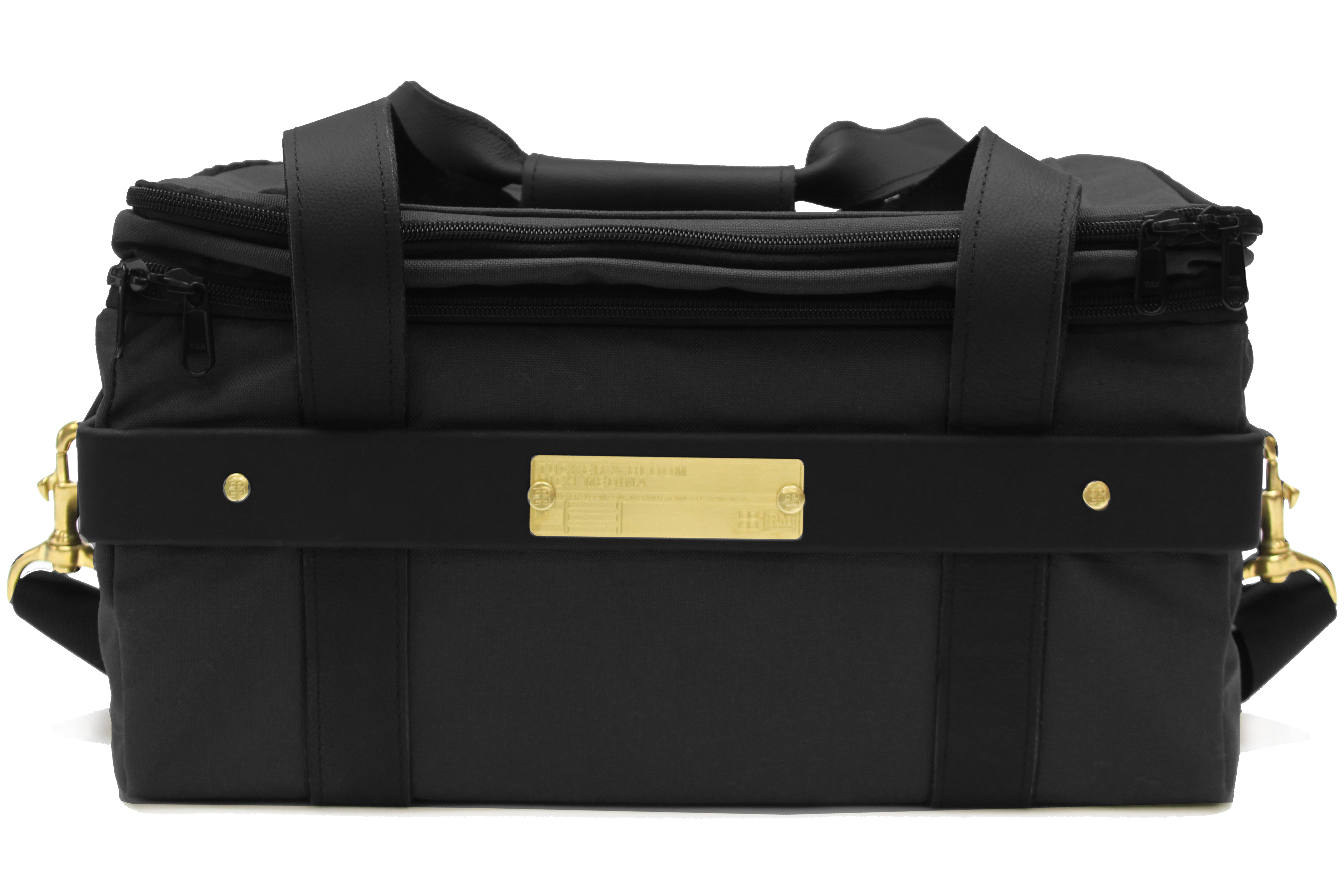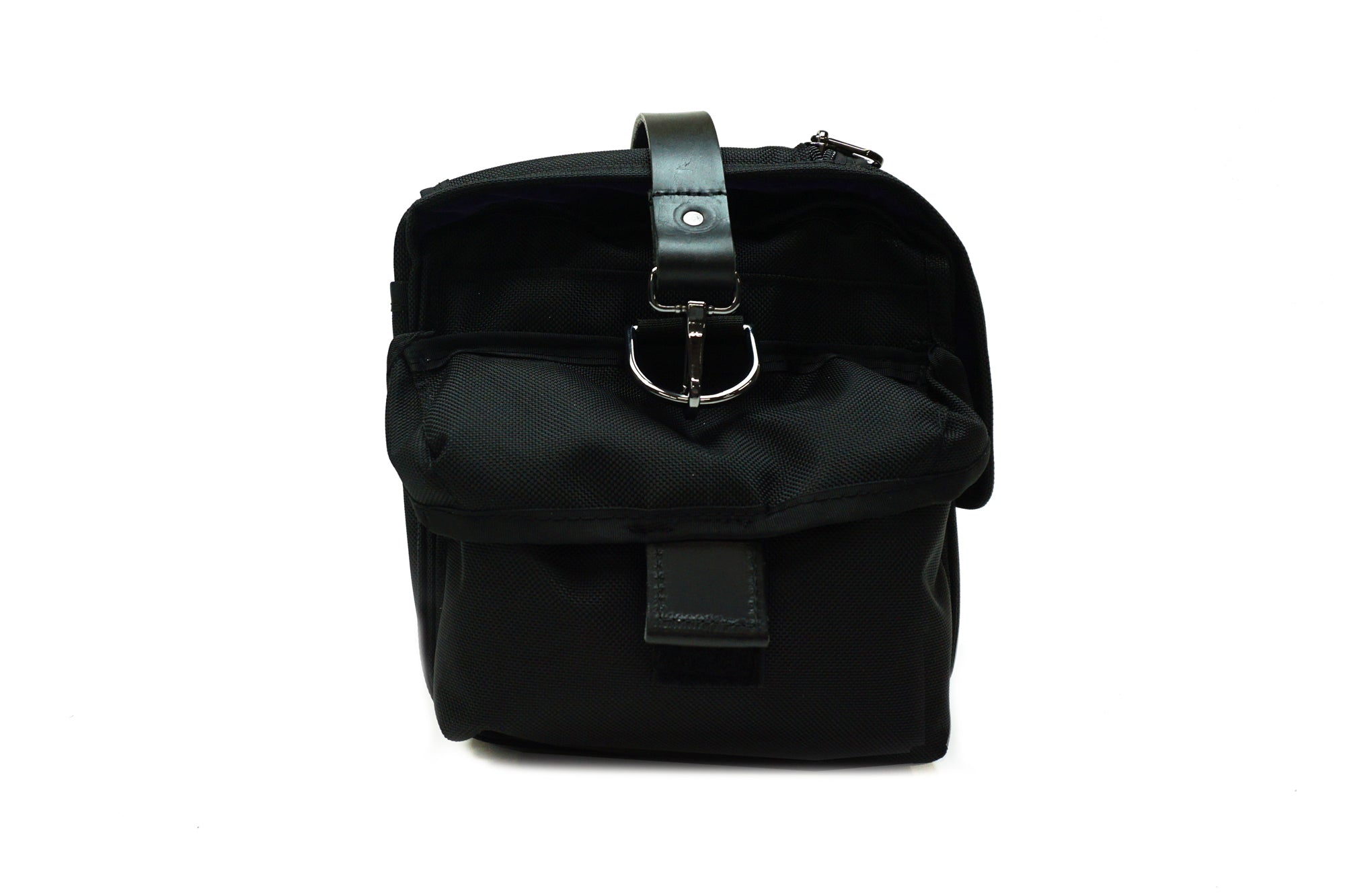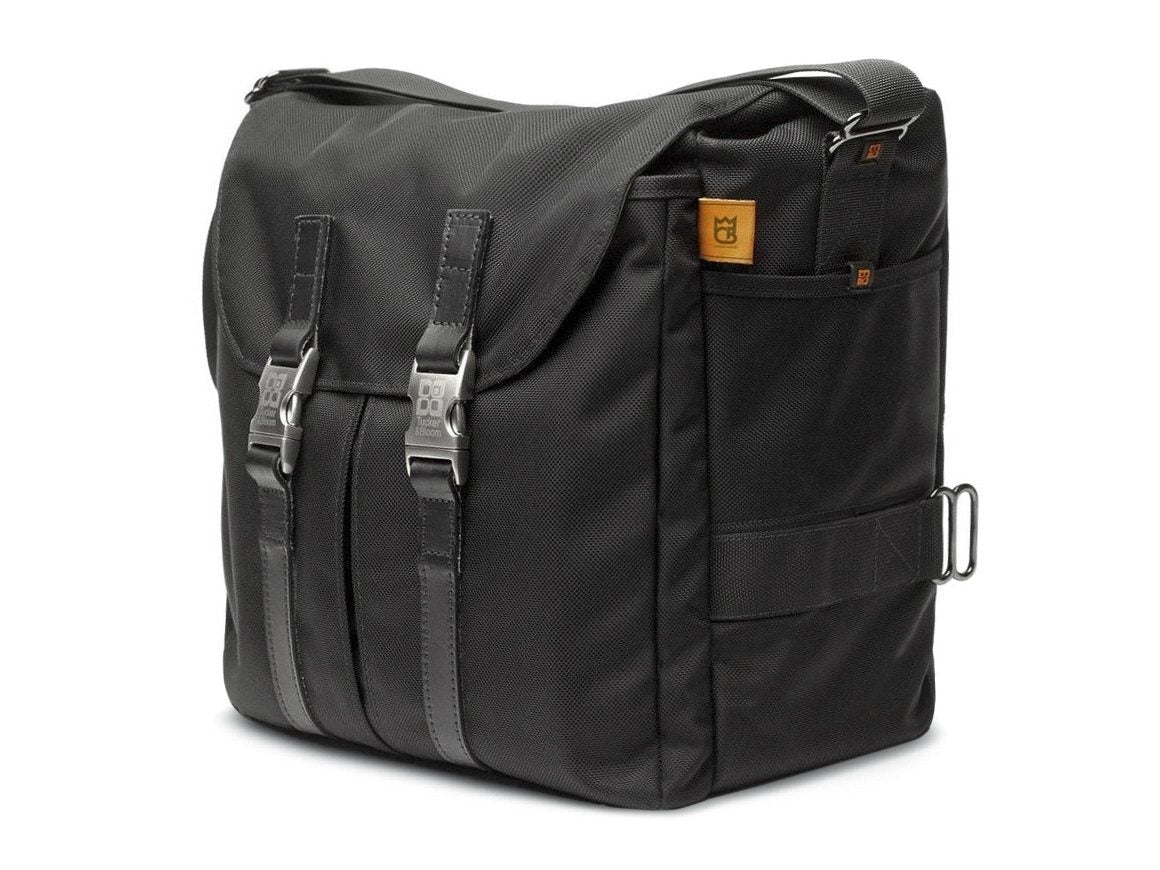Spaces, Lines, Phrases, Progression.
If you compare them, jazz and skateboarding are obvious cousins; both have been vehicles for self-expression and magnets for individual thinkers for decades. Both have had tremendous influence on culture (highbrow? lowbrow? no brow? it’s hard to tell, and likely a little bit of all). Both deal with spaces, lines, phrases, progressions. Before Spike Jonze paired Mark Gonzales handycam clips to John Coltrane records in Blind Skateboard’s “Video Days” film back in 1991, these things existed on their own planes. Arguably ever since, though, jazz and skating have been a more familiar pairing.
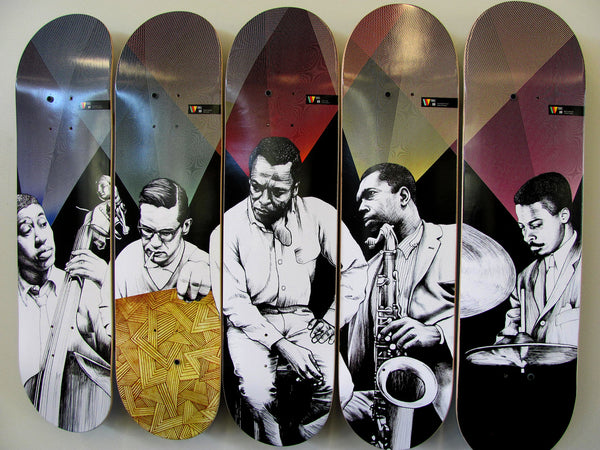
Even if jazz, on the whole, is a familiar visual touchpoint now (how many of Reid Miles’ Blue Note covers have been “homaged” at this point?), Ian Johnson’s been capturing it in a fresh visual language all its own—realistic pen and ink portraits of heavies like Louis, Monk and Miles, but also snares Kennedy-era Free-leaning giants like Dolphy, Ayler, and Braxton—all against Rapidograph-precise backgrounds radiating behind them. As Art Director for San Francisco’s Western Edition skateboards, Johnson’s been laying his own riffs out on decks (full disclosure: I’ve bought several) for well over ten years, but it wasn’t until I lucked across his monograph, I Know You’re Somewhere, in a bookshop recently that I recognized the linework and subject matter from Western Edition decks at home, which put work to name, allowing this interview to happen:
First up, the particulars: Where did you grow up? How long have you been around SF?
I was born in Syracuse, NY. My family moved around a bit and then ended up in SF in 1993. I have been here ever since, barring some time in NYC.
I've read in other interviews that going to art school "wasn't your thing"—can you dig into that a little bit? What was the feeling there? Where there specific differences between the Bay and the East Coast that you remember?
I guess it was more that school in general wasn’t my thing. At the time I just didn’t really want to be there. I would love to be able to have the time and freedom to study and learn and practice now, but back then I just didn’t see what an opportunity it really was. I was just thought it was all bullshit, but didn’t realize I could actually learn things and make it more of what I wanted. Then again, I guess I didn’t really want anything at the time.
The feeling was that the quality of the students was going down, and anybody could get in, and it seemed like a cop out a bit for people that didn’t want to go through the rigors of academia, except for a few people—though I am sure that gets weeded out a bit as you get to the higher years and graduate school. I was mostly into skateboarding and rap at the time, and those scenes were actually pretty similar at the time in NYC and SF.
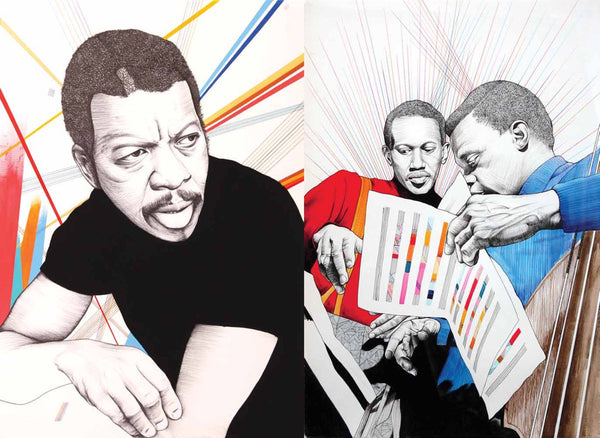
This may seem like a really broad topic to just jump into, but....jazz? How did jazz become your focus for your art? Was there a connection between jazz and your skating style? Did one come first for you (ie jazz influenced how you skate, or vice versa?)
It was kind of a path of least resistance thing, really. I liked jazz, and did some jazz drawings which were used to start Western Edition with. And each season I’d make new ones, eventually sold some, had some shows and it just kind of naturally evolved. I like kind of having a foundation and try not to just jump on something new because it’s trendy at the time. I branch off on occasion, but it is all from the fountainhead of jazz and what I have done before.
There is a connection between jazz and skating for sure, but my personal skating…not much. You have to be much better than I ever was to really achieve that in skating.
Can you talk a little bit about the play between the portraiture and the backgrounds in your work? Radiating lines, big spaces, environments…is this driven by how you visualize music? Or is it more pure expression and composition?
Well the portraits came first, but just drawing from old photographic references gets a bit boring after a while. You’re not bringing enough to the table, really. At first, the backgrounds were just a way to fill space.
Later on, I thought about it more as the music—or ideas or perceptions of others of that particular musician’s. I don’t really visualize music, funnily enough—I try to guess at it, but it is not in fact in my mind in that way. It’s a balance between expression of ideas and composition for sure. Mainly I do black and white portraits with color backgrounds, alluding to the physical person being a statue in time of the creation, but the music living on a being vibrant and alive long after the creator.
It's cool to see the range of jazz eras in your work; you've got Bop, post-Bop, Free, Avant....is there a particular era of jazz that you're drawn to the most? I'm seeing a lot of 60s-leaning guys in here.
It changes all the time, but I think for a while I have been mostly into mid-to-late-60s free-leaning people. I just think the time period is fascinating—so much was changing, and sometimes hard to parse out what was genuine and important from what was not. I like that idea. I also like don’t like to lean on super popular people as much, and try and learn about other people and hopefully, in turn, get others interested in them possibly.
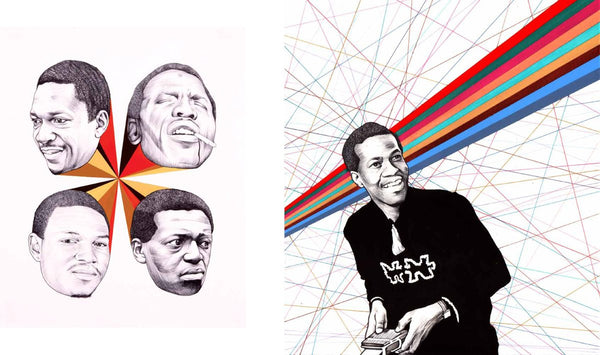
Are there particular scales/sizes that you enjoy working at? How do you decide what portraits to capture?
Size is really dictated by my studio, which is very small. I often work in pen and ink, so it’s just easier for me to draw at a legal size paper scale. I like to work big, but it’s more pressure if it doesn’t work out good—you have this big piece that just hangs there, mocking you.
I just look for things that speak to me in some way. I prefer ones I haven’t seen too often, or at all, and try to crop them or remix them in a way I think will be interesting. Sometimes it works better than others. Sometimes it feels more original than other times.
I'm assuming with a wide range of musicians/covers referenced in your work you spend some time digging for records. Favorite spots around SF? Beyond?
I don’t really have much time or space for record shopping anymore. I just go to places on my route to and from work. Amoeba, Green Apple, Goodwill. Groove Merchant is dope, but I never really go there.
Is there someone you'd love to capture in your work but haven't quite "gotten" it down? Is there anyone you're afraid to try to capture? Where do see/feel your work pushing to next?
I don’t think I have quite gotten any of them down yet, so anyone, really. I’m not really afraid to fail anymore—I used to be afraid of people that were still alive. I think I will get a bit more abstract and less focused on portraits but always keep a toe in that. But you never know where working will lead you.
How does your work weave into the work of Western Edition? You're obviously responsible of the Out to Lunchseries and some of the one-off decks, but are you responsible for all other graphics, as well? What's your typical day look like around the WE offices?
It’s the basis of Western Edition. I am the art director, so I do most everything. Sometimes we have someone come in and do something, but not too often. I work at FTC, and the FTC/WE office is a small desk in the back. A typical day is…I ride my bike there, get a coffee and sit in front of the computer or paper and try to make something. Then I go home and watch my daughter. When she goes to sleep I start working again until I fall asleep or say fuck it, watch TV and drink.

Record Bags
Record bags made for DJs or record buying folks. DJ Backpacks and messenger bags meant for holding 7” records, 45's, LPs, 12" singles, and virtually any other vinyl record format you can think of.
DJs require a specific type of bag, and that’s why we make our bags to the specifications and needs of working class DJs. Large enough to hold all types of vinyl, and padded enough to provide peace of mind that your precious LPs will make it from one gig to the next, without a scratch. From our larger 45 bag, made to hold a large assortment of records, to our dj backpacks and dj messenger bags, that are able to hold records and other necessary items, like cables, and laptops, we’ve got all the needs of a working class DJ covered.



